Are you looking for the funniest and most memorable “Carol Burnett Mama’s Family” sketches? Hudsonfamily.net dives into the best moments from The Carol Burnett Show’s iconic “Family” sketches, offering a curated list that highlights the show’s brilliance in capturing family dynamics. This will bring laughter and fond memories back to your viewing experience, while providing a comprehensive overview of the show’s best moments. Get ready to explore these comedic gems and understand why they continue to resonate with audiences today.
1. The Origin of “The Family” Sketches
The “Family” sketches, a cornerstone of The Carol Burnett Show, first appeared in March 1974, late in the show’s seventh season. Carol Burnett masterfully portrayed Eunice Harper Higgins, a working-class mother whose aspirations for stardom and happiness were continually thwarted by her cantankerous mother, Thelma “Mama” Harper, played by Vicki Lawrence, and her unambitious husband, Ed Higgins, portrayed by Harvey Korman.
Over the next four seasons, “The Family” became one of the show’s most beloved segments. Burnett and her ensemble performed 30 sketches before the show concluded in 1978. These sketches introduced a variety of family members, including three brothers: Roddy McDowall as the successful screenwriter Phillip, Tommy Smothers as the salesman Jack, and Alan Alda as Larry, the family’s artistic outlier. Betty White also made recurring appearances as Eunice’s snobbish sister, Ellen, and Tim Conway played Mickey Hart, Ed’s slow-witted and partially deaf employee.
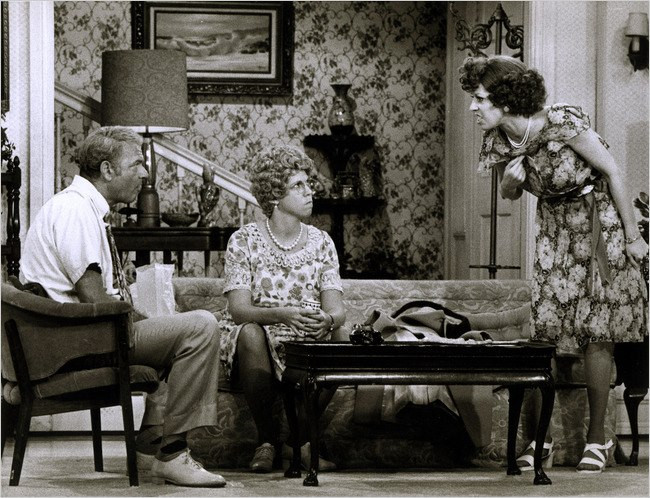 486992_10200210858371127_269935299_n
486992_10200210858371127_269935299_n
1.1. Transition to Mama’s Family
After another sketch featuring Burnett and Lawrence on Carol Burnett & Company in 1979, and a 1982 TV movie titled Eunice, Vicki Lawrence starred in the spin-off sitcom Mama’s Family. The sitcom aired for two years on NBC and four years in first-run syndication. Although Burnett occasionally appeared during the NBC years, the sitcom differed significantly from the original “Family” sketches, which were widely considered superior.
1.2. What Made the “Family” Sketches Special?
The brilliance of the “Family” sketches lies in their sharp writing, stellar performances, and relatable portrayal of dysfunctional family dynamics. Each character was meticulously crafted, bringing a unique flavor to the comedic chaos. The sketches explored the complexities of family relationships, offering both humor and poignant moments. The interactions between Eunice, Mama, and Ed were particularly memorable, showcasing a blend of love, resentment, and exasperation that resonated with audiences.
1.3. How Did Guest Stars Enhance the Sketches?
The inclusion of guest stars like Roddy McDowall, Betty White, and Tim Conway added another layer of comedic brilliance to the “Family” sketches. These guest stars not only brought their individual talents to the table but also seamlessly integrated into the existing dynamic, creating memorable and hilarious moments. Their presence elevated the sketches and provided fresh perspectives on the already beloved characters.
2. Top 10 “Family” Sketches from The Carol Burnett Show
Here is a curated list of ten of the best “Family” sketches from The Carol Burnett Show, showcasing the humor and brilliance of Carol Burnett and her cast.
2.1. November 16, 1974: The Family Plays Sorry!
The family plays Sorry! is a sketch featuring just the three regulars in a room playing the board game Sorry! Carol Burnett’s ability to switch between moods is unbelievable, and Vicki Lawrence’s character, Mama, is hilariously antagonizing towards Eunice.
This sketch is a prime example of the show’s ability to create humor from everyday situations, making it a relatable and comedic highlight. The dynamic between the characters is on full display, with each interaction adding to the sketch’s overall hilarity.
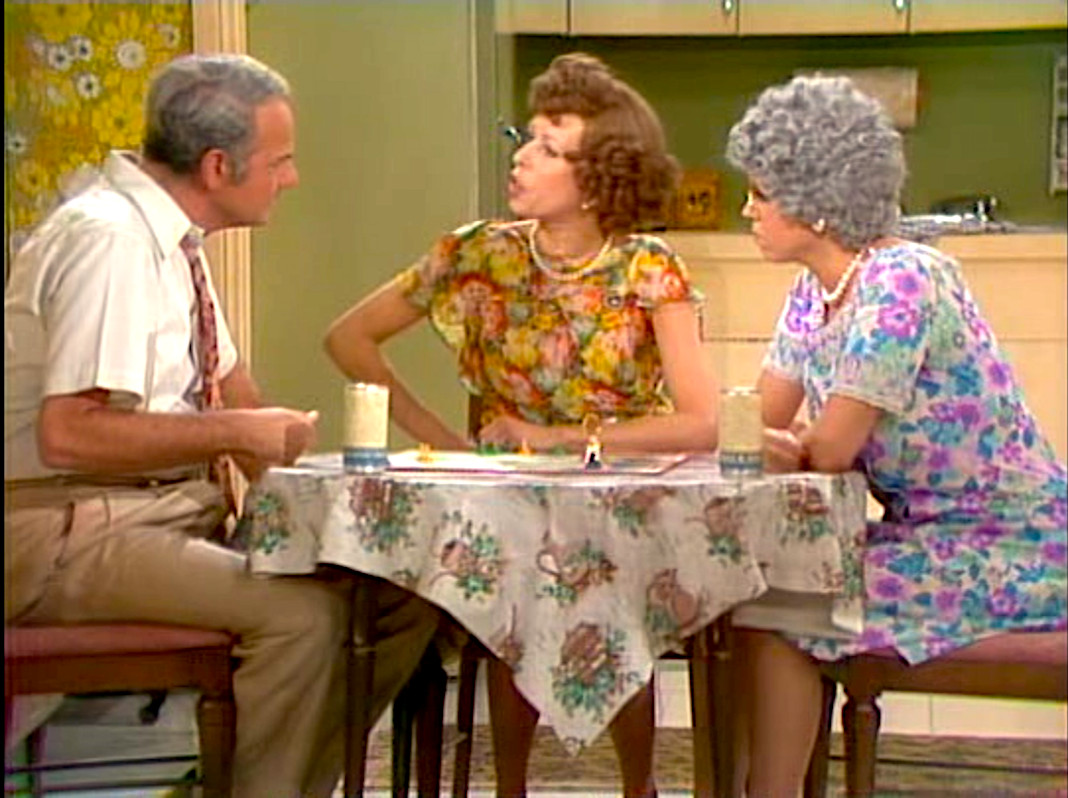 Screen Shot 2017-12-11 at 4.03.53 PM
Screen Shot 2017-12-11 at 4.03.53 PM
2.2. January 25, 1975: Mama Has a New Beau (William Conrad)
In Mama has a new beau, a giddy Mama is a hoot! William Conrad does a fine job playing her new beau, mostly reacting to the absurd shenanigans. Eunice’s rage is uproarious, and her scene with Mama in the kitchen is a highlight. This episode is available on the Columbia House release.
The contrast between Mama’s excitement and Eunice’s frustration creates a comedic tension that drives the sketch. Conrad’s role as the bewildered beau adds another layer of humor, making this episode a memorable one.
2.3. March 15, 1975: The Family Visits Phillip (Roddy McDowall) in California
The family visits Phillip in California is the second of three appearances by Roddy McDowall as Phillip. The family’s visit to California is filled with memorable moments, from Mama’s insistence on watching her soap opera to Eunice’s obvious attempts to get a role in Phillip’s new movie.
The sketch perfectly captures the clash between the family’s working-class background and Phillip’s Hollywood lifestyle, creating numerous comedic opportunities. McDowall’s performance adds a touch of sophistication to the chaos, making this sketch a standout.
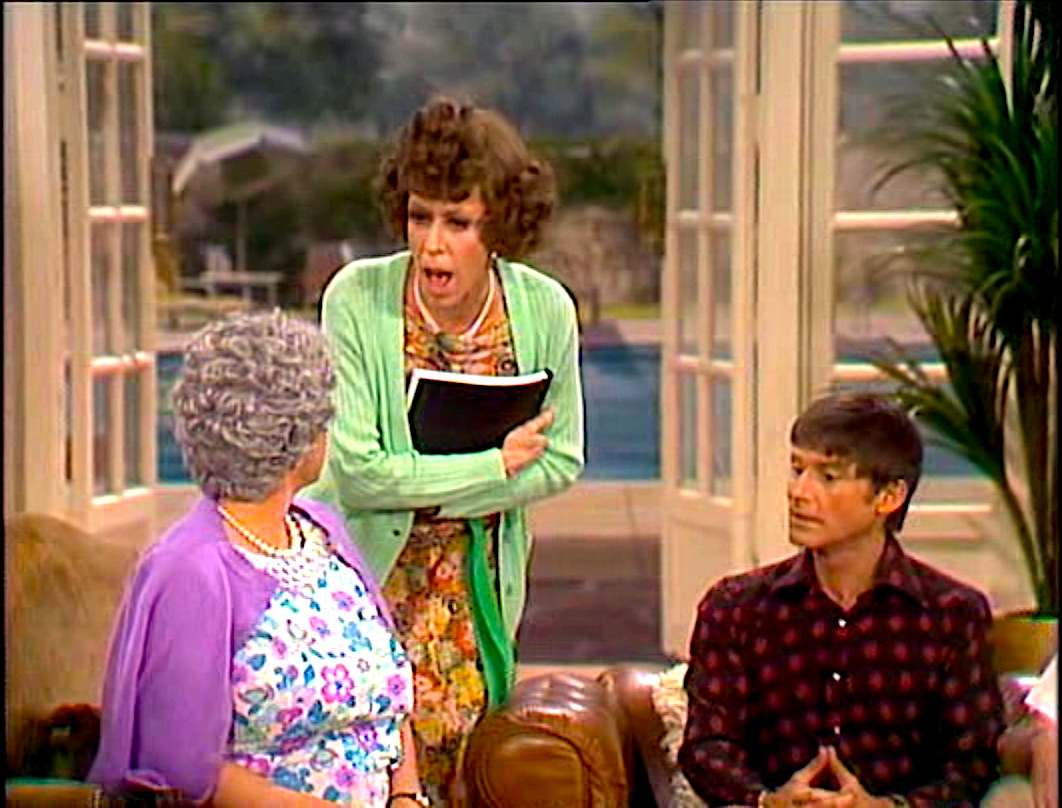 Screen Shot 2017-12-11 at 4.04.55 PM
Screen Shot 2017-12-11 at 4.04.55 PM
2.4. September 13, 1975: Ed Visits a Massage Parlor (Guest Starring Jim Nabors)
In Ed visits a massage parlor, Eunice disrupts Mama’s TV time by announcing she’s leaving Ed after catching him entering a massage parlor. Jim Nabors is gold as an addled cab driver, desperately trying to collect the fare Eunice owes him. Tim Conway makes his second appearance as Mickey Hart, playing off Korman’s Ed beautifully. Unfortunately, this episode has not been released on DVD.
Nabors’ comedic timing and Conway’s physical comedy make this sketch a riot. The escalating chaos as Eunice tries to leave Ed and Nabors tries to get paid is a testament to the show’s comedic genius.
2.5. October 25, 1975: Mickey (Tim Conway) Has Dinner with the Family; They Play Charades
Mickey has dinner with the family showcases the foursome engaging in an acidly competitive game of charades. Vicki Lawrence and Carol Burnett shine during the “Wait Till The Sun Shines Belly” bit, highlighting excellent ensemble work.
The sketch’s humor comes from the characters’ exaggerated reactions and competitive spirits, turning a simple game into a hilarious spectacle. Conway’s portrayal of Mickey adds a layer of absurdity to the already chaotic family dynamic.
 Screen Shot 2017-12-11 at 4.05.45 PM
Screen Shot 2017-12-11 at 4.05.45 PM
2.6. November 15, 1975: The Family Has a Conference with Bubba’s Teacher (Maggie Smith)
In the family has a conference with Bubba’s teacher, reminiscent of Everybody Loves Raymond’s “The Angry Family,” this sketch is one of the funniest and most dramatically rich. The acrimonious trio visits Bubba’s teacher in a scene that leads to blowouts and revelations. Maggie Smith is amusing as the unfortunate witness to the ugliness.
The sketch’s brilliance lies in its ability to blend humor with genuine emotional moments, creating a poignant and relatable portrayal of family dysfunction. Smith’s understated performance as the teacher adds a touch of realism to the comedic chaos.
2.7. September 25, 1976: The Family Plays Monopoly
After the success of Sorry!, the writers again have the family playing a board game. With similar venom, the family plays Monopoly successfully captures the cyclical antagonistic relationship between Eunice, Ed, and Mama. Burnett’s turnaround after her angry rain-soaked tantrum is a highlight.
The sketch’s humor comes from the characters’ intense competitiveness and inability to play nicely, turning a friendly game into a battleground. Burnett’s performance is particularly noteworthy, showcasing her ability to seamlessly transition between comedic and dramatic moments.
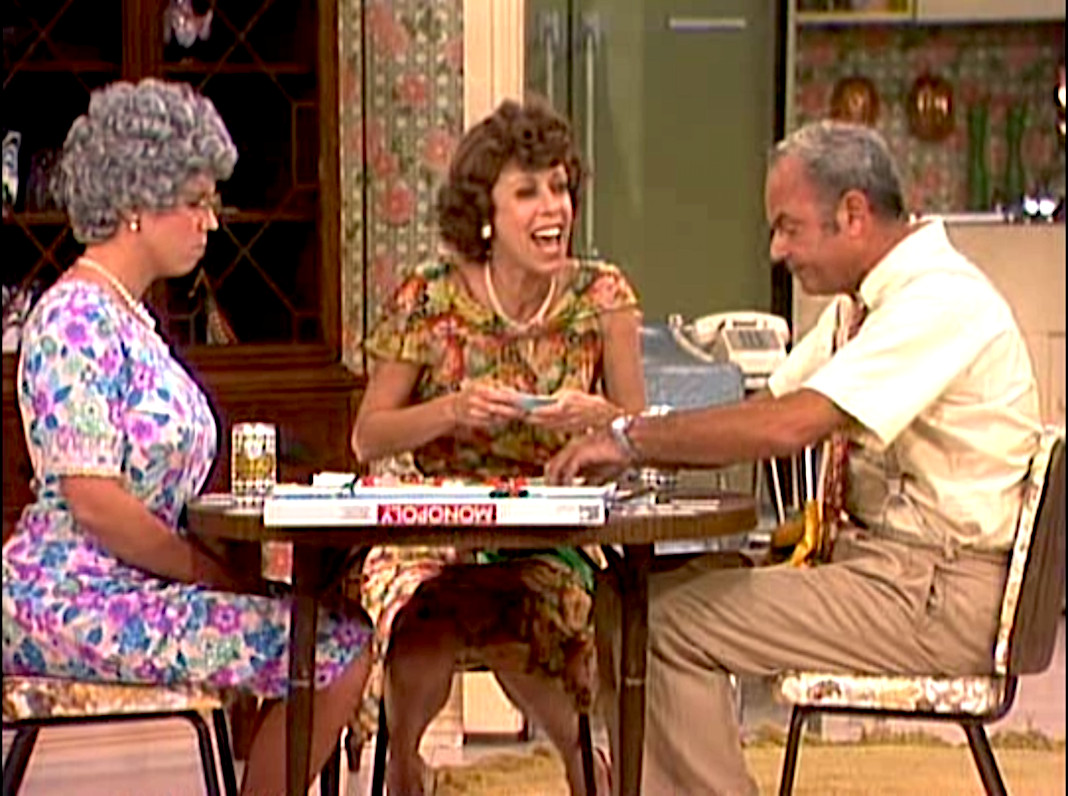 Screen Shot 2017-12-11 at 4.07.03 PM
Screen Shot 2017-12-11 at 4.07.03 PM
2.8. October 16, 1976: Eunice Rehearses for a Play (Guest Starring Madeline Kahn)
The hilarious Madeline Kahn plays flighty Mavis Danton in this scene that finds Eunice rehearsing for a bit role in an upcoming play. Her family’s intrusions are priceless, and the run-through of the scene with Ed and Mama participating is a highlight. Kahn is one of the few “Family” guest stars who gets to do more than react.
Kahn’s comedic chemistry with Burnett and the rest of the cast elevates this sketch to another level. The family’s interruptions and absurd interpretations of the play create a hilarious and memorable scene.
2.9. November 06, 1976: The Family Visits Mickey (Tim Conway) at His Apartment for Dinner
In the family visits Mickey at his apartment for dinner, these four are magical together, and this is Conway’s best “Family” sketch. From Mama’s difficulty with the chair to Eunice’s fury over Mickey’s new raise, this sketch is one you won’t forget.
The sketch’s humor comes from the characters’ interactions and Conway’s physical comedy, making it a standout episode. The awkwardness of the situation and the family’s inability to adapt to Mickey’s environment create numerous comedic opportunities.
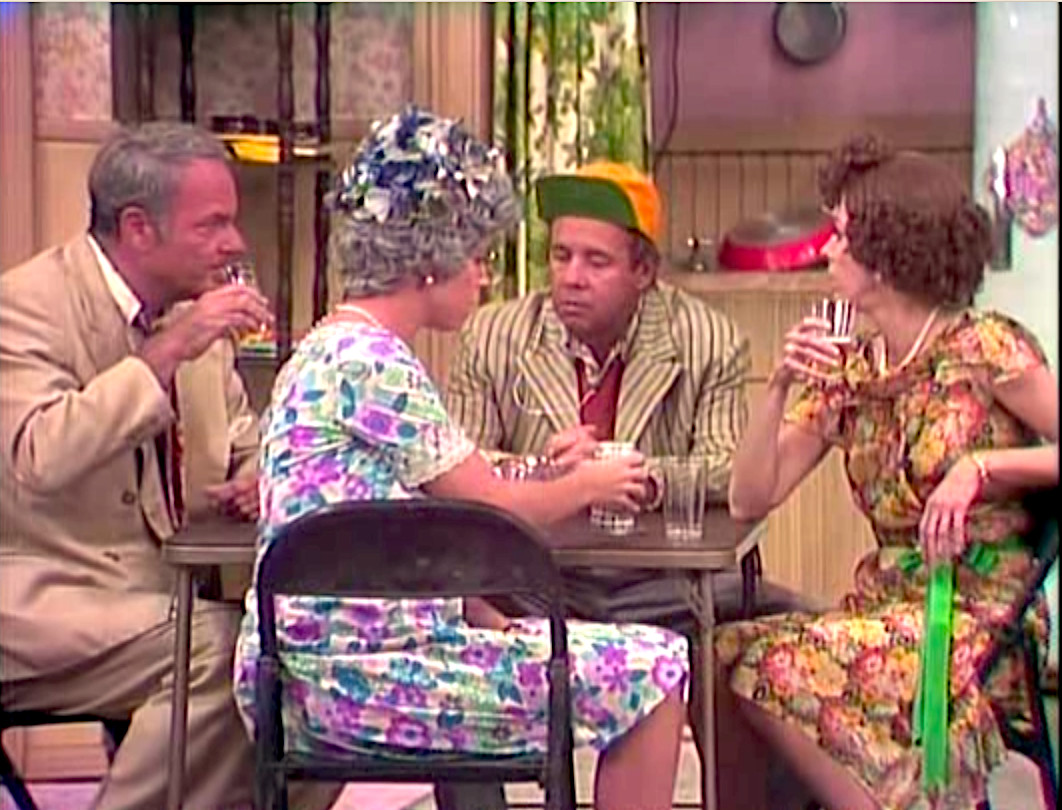 Screen Shot 2017-12-11 at 4.08.09 PM
Screen Shot 2017-12-11 at 4.08.09 PM
2.10. December 11, 1976: Eunice, Ed, and Ellen (Betty White) Help Mama Clean the Attic
Betty White shines as Ellen in this, the second of her three appearances. Her episodes always take the sketches in an even nastier direction. The rivalry between Ellen and Eunice is funny and painfully raw. Ed’s referring to the ladies as “dragons,” and White’s delectable revelation of what happened to Eunice’s beloved Fluffy is hysterical.
The sketch’s humor comes from the characters’ petty arguments and White’s sharp comedic timing. The dynamic between Eunice and Ellen is particularly entertaining, showcasing their competitive and often cruel relationship.
3. The Enduring Appeal of “The Family”
The “Family” sketches from The Carol Burnett Show have stood the test of time due to their relatable characters, sharp writing, and the cast’s undeniable chemistry. The sketches delve into the complexities of family dynamics, capturing the love, resentment, and humor that coexist within these relationships.
The show’s ability to find humor in everyday situations and create characters that audiences can both laugh at and empathize with has contributed to its lasting legacy. The “Family” sketches continue to be enjoyed by new generations, solidifying their place as a classic example of sketch comedy.
3.1. How Did the Characters Resonate with Audiences?
The characters in the “Family” sketches resonated with audiences because they were flawed, relatable, and often exaggerated versions of real people. Each character had their quirks, insecurities, and aspirations, making them feel authentic and human.
Eunice’s dreams of stardom, Mama’s cantankerous nature, and Ed’s laid-back attitude were all traits that audiences could recognize in their own families or acquaintances. This relatability allowed viewers to connect with the characters on a deeper level, enhancing the comedic impact of the sketches.
3.2. What Made the Writing So Effective?
The writing in the “Family” sketches was effective because it was sharp, witty, and often based on real-life observations. The writers understood the nuances of family dynamics and were able to translate those nuances into comedic gold.
The sketches were filled with memorable one-liners, clever plot twists, and perfectly timed jokes. The writing also allowed for improvisation and spontaneity, giving the cast the freedom to add their personal touches to the characters and scenes.
3.3. Why Is The Carol Burnett Show Still Relevant Today?
The Carol Burnett Show remains relevant today because its humor is timeless and its characters are universal. The show’s ability to capture the human experience in a comedic and relatable way has allowed it to transcend generations.
Additionally, the show’s emphasis on physical comedy, sharp writing, and strong performances has made it a source of inspiration for many contemporary comedians and writers. The Carol Burnett Show continues to influence the world of comedy and entertain audiences of all ages.
4. Guest Stars Who Enhanced “Mama’s Family”
Many talented guest stars appeared in the “Family” sketches, enhancing the comedic dynamic and bringing new dimensions to the beloved characters. These guest appearances often led to some of the most memorable and hilarious moments in the show’s history.
4.1. Roddy McDowall as Phillip
Roddy McDowall made three appearances as Phillip, Eunice’s successful screenwriter brother. His character provided a stark contrast to the rest of the family, highlighting their working-class background and creating comedic tension. McDowall’s sophisticated demeanor and dry wit added a touch of class to the chaos.
4.2. Betty White as Ellen
Betty White portrayed Ellen, Eunice’s snobbish and competitive sister. White’s comedic timing and ability to deliver cutting remarks made her a perfect foil for Burnett’s Eunice. The rivalry between Ellen and Eunice was a recurring theme in the sketches, providing plenty of opportunities for laughs.
4.3. Tim Conway as Mickey Hart
Tim Conway played Mickey Hart, Ed’s slow-witted and partially deaf employee. Conway’s physical comedy and improvisational skills made him a standout guest star. His interactions with the rest of the family were often absurd and hilarious, adding a unique flavor to the sketches.
4.4. Jim Nabors as the Addled Cab Driver
Jim Nabors’ appearance as the addled cab driver in the “Ed Visits a Massage Parlor” sketch was a comedic highlight. His portrayal of a confused and desperate cab driver trying to collect his fare was both endearing and hilarious. Nabors’ comedic timing and ability to play off the other actors made him a memorable guest star.
4.5. Madeline Kahn as Mavis Danton
Madeline Kahn’s portrayal of Mavis Danton in the “Eunice Rehearses for a Play” sketch was another standout guest appearance. Kahn’s comedic chemistry with Burnett and the rest of the cast elevated the sketch to another level. Her portrayal of a flighty and eccentric actress was both hilarious and memorable.
5. The Evolution of Vicki Lawrence’s Mama
Vicki Lawrence’s portrayal of Thelma “Mama” Harper is a defining element of the “Family” sketches and the subsequent Mama’s Family sitcom. Her transformation from a supporting character in the sketches to the star of her own show is a testament to Lawrence’s talent and the character’s enduring appeal.
5.1. From Sketch Character to Sitcom Star
The transition from sketch character to sitcom star allowed Lawrence to explore Mama’s character in greater depth. While the sketches provided glimpses into Mama’s life and personality, the sitcom offered a more comprehensive portrayal of her daily routines, relationships, and challenges.
This evolution allowed Lawrence to showcase her range as an actress and solidify Mama’s status as a beloved and iconic television character. The sitcom also introduced new characters and storylines, expanding the world of Mama’s family and providing fresh comedic opportunities.
5.2. How Did Mama’s Character Change Over Time?
Over time, Mama’s character evolved from a cantankerous and overbearing matriarch to a more nuanced and sympathetic figure. While she retained her sharp wit and strong opinions, she also began to display moments of vulnerability and compassion.
This evolution allowed audiences to connect with Mama on a deeper level and understand her motivations and insecurities. The character’s growth also provided opportunities for Lawrence to explore different aspects of Mama’s personality, showcasing her versatility as an actress.
5.3. The Impact of Mama’s Family on Television
Mama’s Family had a significant impact on television, particularly in its portrayal of working-class families and its exploration of social issues. The show tackled topics such as poverty, unemployment, and family dysfunction with humor and sensitivity.
The sitcom also provided a platform for Lawrence to showcase her talent and solidify her status as a comedic icon. Mama’s Family remains a beloved and influential television show, continuing to entertain audiences with its relatable characters and timeless humor.
6. The Influence of “The Family” on Comedy
The “Family” sketches from The Carol Burnett Show have had a lasting influence on comedy, inspiring countless comedians, writers, and television shows. The sketches’ innovative use of character-based humor, sharp writing, and improvisational techniques has set a high standard for sketch comedy.
6.1. How Did “The Family” Break New Ground?
“The Family” broke new ground by pushing the boundaries of what was considered acceptable on television. The sketches tackled taboo subjects, explored complex family dynamics, and featured characters who were flawed and often unlikeable.
This willingness to take risks and challenge conventions paved the way for future generations of comedians and writers to explore similar themes and styles. “The Family” also demonstrated the power of character-based humor, proving that relatable and well-developed characters can drive comedic success.
6.2. Comedians Inspired by “The Family”
Many contemporary comedians have cited “The Family” as a source of inspiration, including Tina Fey, Amy Poehler, and Kristen Wiig. These comedians have praised the sketches for their sharp writing, strong performances, and ability to find humor in everyday situations.
“The Family” has also influenced the style and content of many popular television shows, such as Saturday Night Live, The Simpsons, and Modern Family. These shows have adopted similar techniques, such as character-based humor, improvisational acting, and satirical commentary on social issues.
6.3. The Legacy of Character-Based Comedy
The legacy of “The Family” lies in its emphasis on character-based comedy. The sketches proved that well-developed and relatable characters can drive comedic success and create lasting connections with audiences.
This approach to comedy has influenced countless comedians and writers, shaping the landscape of contemporary humor. The “Family” sketches continue to be studied and emulated, solidifying their place as a classic example of character-based comedy.
7. What Made Carol Burnett’s Eunice So Relatable?
Carol Burnett’s portrayal of Eunice Harper Higgins is a masterclass in comedic acting. Her ability to capture the character’s insecurities, frustrations, and dreams made Eunice a relatable and endearing figure, despite her flaws.
7.1. Portrayal of Flaws and Insecurities
Burnett’s portrayal of Eunice’s flaws and insecurities made her a relatable character for many viewers. Eunice’s dreams of stardom, her jealousy of her siblings, and her struggles with her marriage were all issues that resonated with audiences.
Burnett did not shy away from portraying Eunice’s negative qualities, such as her selfishness and her tendency to lash out at others. However, she also managed to convey Eunice’s underlying vulnerability and her desire to be loved and accepted.
7.2. The Balance of Comedy and Pathos
Burnett skillfully balanced comedy and pathos in her portrayal of Eunice. While the sketches were often filled with slapstick and over-the-top humor, Burnett also brought moments of genuine emotion and tenderness to the character.
This balance allowed audiences to laugh at Eunice’s antics while also empathizing with her struggles. Burnett’s ability to convey both comedy and pathos made Eunice a complex and compelling character.
7.3. Eunice’s Impact on Female Characters in Comedy
Eunice’s character had a significant impact on female characters in comedy. She challenged stereotypes of women as passive and submissive, portraying a character who was strong-willed, independent, and often rebellious.
Eunice also paved the way for future generations of female comedians to create complex and flawed characters who defied expectations. Her legacy can be seen in the work of comedians such as Roseanne Barr, Amy Schumer, and Lena Dunham.
8. The Art of Physical Comedy in “The Family”
Physical comedy was a key element of the “Family” sketches, adding another layer of humor to the already hilarious situations. The cast’s ability to use their bodies and expressions to create comedic moments was a hallmark of the show.
8.1. Slapstick and Exaggerated Movements
Slapstick and exaggerated movements were common in the “Family” sketches, often used to highlight the characters’ frustrations and frustrations. Carol Burnett was a master of physical comedy, using her body to convey a wide range of emotions and reactions.
Harvey Korman and Tim Conway were also skilled physical comedians, often engaging in elaborate pratfalls and sight gags. The cast’s willingness to embrace physical comedy added a unique flavor to the sketches.
8.2. Facial Expressions and Reactions
Facial expressions and reactions were another important element of the physical comedy in “The Family” sketches. The cast’s ability to convey emotions through their faces added depth and humor to the scenes.
Vicki Lawrence’s portrayal of Mama was particularly noteworthy for her expressive face, which conveyed a wide range of emotions, from disdain to amusement. The cast’s mastery of facial expressions and reactions enhanced the comedic impact of the sketches.
8.3. The Importance of Timing
Timing was crucial to the success of the physical comedy in “The Family” sketches. The cast’s ability to execute their movements and reactions at the perfect moment enhanced the humor and impact of the scenes.
Carol Burnett was known for her impeccable timing, often delivering a perfectly timed reaction or expression that would send the audience into fits of laughter. The cast’s mastery of timing was a key ingredient in the success of the physical comedy in “The Family” sketches.
9. The Role of Improv in “The Family” Sketches
Improvisation played a significant role in the “Family” sketches, allowing the cast to add their personal touches to the characters and scenes. The show’s writers encouraged improvisation, recognizing that it could enhance the humor and spontaneity of the sketches.
9.1. How Did the Writers Encourage Improvisation?
The writers encouraged improvisation by providing the cast with a basic script but allowing them to ad-lib and add their own lines and reactions. This approach gave the cast the freedom to explore the characters and scenes in their own way, leading to unexpected and often hilarious moments.
The writers also trusted the cast’s comedic instincts, knowing that they could rely on them to deliver memorable and funny performances. This collaborative approach fostered a creative and supportive environment on the set.
9.2. Memorable Improvised Moments
Many memorable moments in the “Family” sketches were the result of improvisation. For example, Tim Conway’s portrayal of Mickey Hart was often filled with improvised lines and physical comedy, adding a unique flavor to the character.
Carol Burnett was also known for her ability to improvise, often adding her own reactions and expressions to the scenes. These improvised moments often became some of the most memorable and iconic parts of the sketches.
9.3. The Impact of Improv on the Show’s Success
The use of improvisation had a significant impact on the show’s success. It allowed the cast to create more authentic and relatable characters, adding depth and humor to the scenes.
Improvisation also fostered a sense of spontaneity and freshness, making each performance unique and unpredictable. The show’s willingness to embrace improvisation contributed to its lasting appeal and its reputation as a classic example of sketch comedy.
10. Discover More About Family Life on Hudsonfamily.net
If you enjoy exploring the dynamics of family life and appreciate the humor and warmth found in shows like The Carol Burnett Show, then Hudsonfamily.net is the perfect resource for you. Visit us to discover a wealth of articles, stories, and advice on everything from parenting tips to relationship advice and family activities.
10.1. How Can Hudsonfamily.net Help Your Family?
Hudsonfamily.net can help your family by providing valuable insights and practical advice on a wide range of topics. Whether you’re looking for tips on raising children, strengthening your marriage, or managing your finances, you’ll find a wealth of resources on our website.
Our articles are written by experts in their respective fields and are designed to be informative, engaging, and easy to understand. We also offer a variety of interactive tools and resources, such as quizzes, calculators, and checklists, to help you apply our advice to your own family.
10.2. What Topics Are Covered on Hudsonfamily.net?
Hudsonfamily.net covers a wide range of topics related to family life, including:
- Parenting tips and advice
- Relationship advice for couples
- Financial planning and management
- Family activities and travel
- Health and wellness
- Education and learning
- Home improvement and decor
- Recipes and cooking tips
- Family traditions and celebrations
We also feature personal stories and essays from real families, providing a diverse and relatable perspective on family life.
10.3. Where Can You Find Us?
You can find Hudsonfamily.net online at https://hudsonfamily.net. We also have a presence on social media, where you can follow us for the latest updates, articles, and resources.
Join our community of families who are committed to building strong, healthy, and happy relationships. Visit Hudsonfamily.net today and start exploring the wealth of resources we have to offer.
Address: 1100 Congress Ave, Austin, TX 78701, United States
Phone: +1 (512) 974-2000
Website: hudsonfamily.net
FAQ About “Carol Burnett Mama’s Family”
1. What is “Mama’s Family” a spin-off of?
“Mama’s Family” is a spin-off of “The Family” sketches from The Carol Burnett Show. The sketches featured Carol Burnett as Eunice Harper Higgins, Vicki Lawrence as Thelma “Mama” Harper, and Harvey Korman as Ed Higgins.
2. Who played Mama on “The Carol Burnett Show”?
Vicki Lawrence played Thelma “Mama” Harper on The Carol Burnett Show in the “Family” sketches. Lawrence’s portrayal of Mama was so popular that she eventually starred in the spin-off sitcom Mama’s Family.
3. How many seasons did “Mama’s Family” run?
“Mama’s Family” ran for six seasons, with the first two seasons airing on NBC from 1983 to 1984 and the final four seasons airing in first-run syndication from 1986 to 1990.
4. What made the “Family” sketches so popular?
The “Family” sketches were popular because of their relatable characters, sharp writing, and the cast’s undeniable chemistry. The sketches explored the complexities of family dynamics, capturing the love, resentment, and humor that coexist within these relationships.
5. Did Carol Burnett appear on “Mama’s Family”?
Yes, Carol Burnett made occasional appearances on Mama’s Family, reprising her role as Eunice Harper Higgins. However, her appearances were infrequent, as she was busy with other projects.
6. Who were the main characters on “Mama’s Family”?
The main characters on Mama’s Family were Thelma “Mama” Harper (Vicki Lawrence), her daughter Eunice Harper Higgins (Carol Burnett), Eunice’s husband Ed Higgins (Harvey Korman), and Mama’s other children, including Vinton Harper (Ken Berry) and Naomi Oates Harper (Dorothy Lyman).
7. Where can I watch “The Carol Burnett Show” and “Mama’s Family”?
You can watch The Carol Burnett Show and Mama’s Family on various streaming platforms, such as Amazon Prime Video, YouTube, and DVD. Check your local listings for availability.
8. What are some of the most memorable “Family” sketches?
Some of the most memorable “Family” sketches include “The Family Plays Sorry!,” “Mama Has a New Beau,” “The Family Visits Phillip in California,” and “Mickey Has Dinner with the Family.”
9. How did “The Family” sketches influence comedy?
The “Family” sketches influenced comedy by breaking new ground with their character-based humor, sharp writing, and improvisational techniques. They paved the way for future generations of comedians and writers to explore similar themes and styles.
10. Where can I find more information about “The Carol Burnett Show” and “Mama’s Family”?
You can find more information about The Carol Burnett Show and Mama’s Family on various websites, such as Wikipedia, IMDb, and TV.com. You can also find fan forums and communities dedicated to these shows.

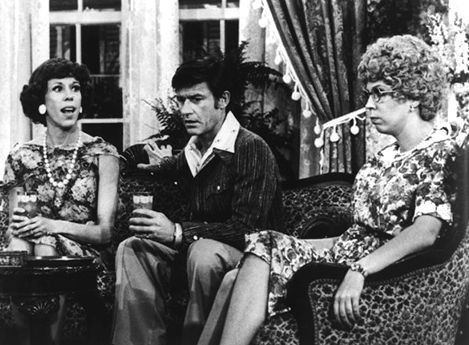 cbshow01
cbshow01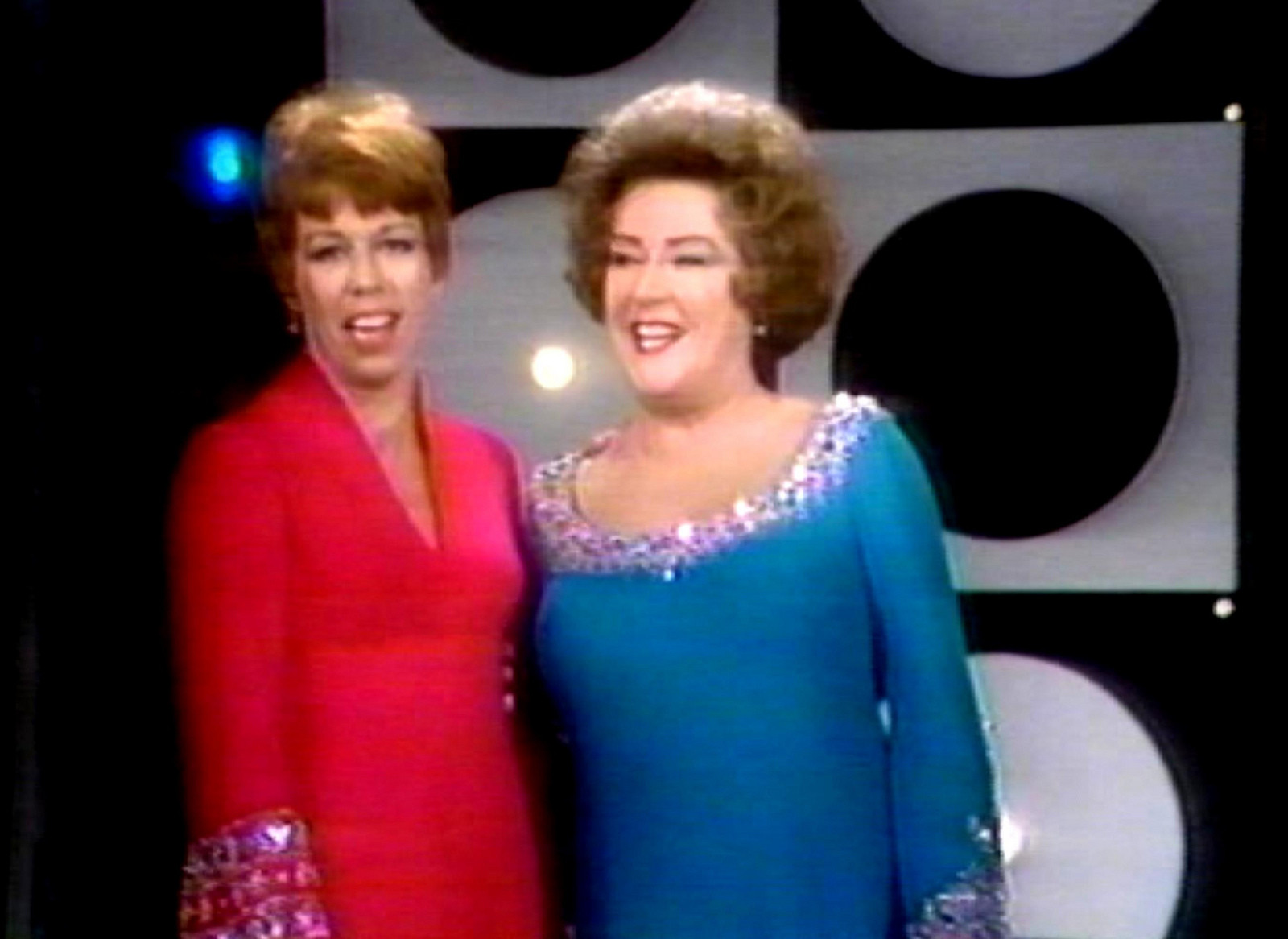 8315787360_575df9ae42_h
8315787360_575df9ae42_h